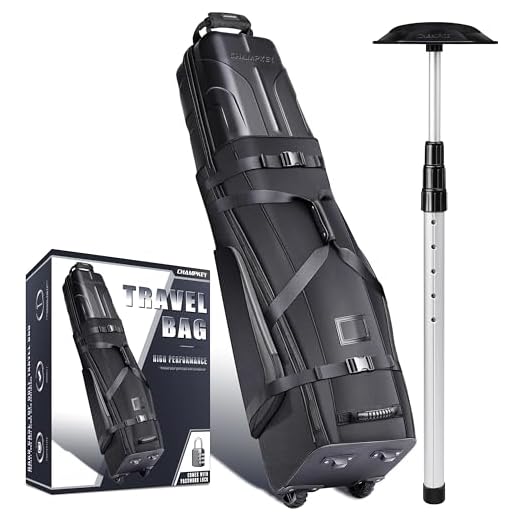

Clothing is a primary candidate for your checked bags. Durable garments, shoes, and outerwear can be safely stored here. Prioritize items suited for various climates based on your travel destination.
Personal care products, including liquids over 100ml, are acceptable in larger quantities. Ensure these items are securely packed to avoid leaks during transit. This category encompasses shampoos, lotions, and perfumes.
Sports equipment like bicycles, skis, and golf clubs are often permitted, though additional fees may apply. Verify the specific airline policies regarding size and weight restrictions to avoid surprises at the check-in counter.
Gifts can be packed as well. However, avoid wrapping packages since they might require inspection. Consider using gift bags instead for convenience.
Lastly, check the list of prohibited items for each airline to ensure compliance. Certain dangerous goods and perishables will need to stay out of the checked section for safety reasons.
Permitted items for international flights
Food items such as biscuits, dried fruits, and snacks fall under allowable categories. Be aware that liquids or items containing liquids should generally follow restrictions similar to cabin bags. Ensure packaging remains intact to prevent spillage.
Electronics and Accessories
Most electronic devices, including laptops and cameras, are accepted. Chargers and power banks must be under specific capacity limits, usually set at 100Wh. Confirm individual airline regulations regarding battery types.
Miscellaneous Goods
Personal care items are generally permissible. However, any creams or gels should remain sealed and within size limits to avoid issues. For guidance on protein sources suitable for post-activity recovery, explore which healthy snack can provide protein after physical activity.
Weight and size restrictions for checked baggage
For most airlines, checked baggage typically cannot exceed 50 pounds (23 kilograms) per piece for economy class travelers. Business and first-class passengers may be allowed heavier bags, sometimes up to 70 pounds (32 kilograms). Always verify specific limitations with the airline, as regulations can vary significantly.
In terms of dimensions, checked bags generally must not exceed linear measurements of 62 inches (158 centimeters) when adding length, width, and height. Bags exceeding this size may incur additional fees or might be denied for transport. It’s advisable to measure your baggage carefully before arriving at the airport to avoid last-minute issues.
Additionally, keep in mind that excess baggage fees can be substantial. Charges may apply not only for weight and size violations but also for an increased number of pieces beyond the airline’s allowance, which is commonly two bags for economy ticket holders. Familiarize yourself with the airline’s specific policies to ensure compliance.
Consider packing efficiently to stay within these parameters. Utilize space-saving techniques such as rolling clothes and selecting lightweight luggage to maximize your allowance. Monitoring updates from your carrier prior to departure can prevent unexpected hassles at the airport.
Common Prohibited Items in Checked Baggage
Items classified as explosive are strictly forbidden. This includes fireworks, flares, and substances like dynamite and other detonators. Cartridges and explosives are also prohibited, as they pose significant risks during transport.
Flammable materials, including gasoline, lighter fluid, and certain paints, cannot be included in checked bags. Any items that can ignite easily or cause a fire hazard are not allowed.
Corrosive Substances
Corrosive materials such as acids, batteries containing corrosive substances, and certain chemical cleaners are banned. These can cause severe damage to aircraft and create hazardous conditions for passengers and crew.
Medical and Self-Defense Items
Items like pepper spray, mace, or any type of firearm must not be packed in checked bags. Additionally, any knife or sharp object exceeding specific length limitations is also prohibited.
Always check with the respective airline for specific guidelines, as regulations may vary. Safe travels depend on compliance with these important restrictions.
Tips for packing liquids and gels
Utilize leak-proof containers with a secure closure to avoid spillage during travel. Ensure each item is clearly labeled for easy identification.
If traveling internationally, be aware of limits regarding volume per container. Typically, individual bottles should not exceed 100ml, and total volume should fit within one liter-sized resealable bag.
Packing liquids in the center of the suitcase, cushioned by clothes, minimizes the risk of breakage. Wrap fragile items in soft clothing for extra protection.
For long trips, consider using travel-sized containers for toiletries, or transfer products into smaller bottles to save space.
Stay informed on the specific regulations for your destination, as rules may vary. Check with your airline for any additional guidelines.
For those planning an adventure, find the best luggage for kenya safari to accommodate all your essentials, including liquids.
Special Considerations for Sports Equipment
Prior to including sports gear in checked baggage, verify airline policies specific to the type of equipment. Each carrier maintains distinct regulations, impacting allowances and potential fees.
Common Types of Sports Equipment
- Bicycles: Disassemble and pack in a protective box to safeguard fragile components. Some airlines charge extra for bicycle transport.
- Surfboards: Often require special handling; check dimensions and allowed weights to avoid unexpected charges.
- Golf Clubs: Must be packed in a hard case to protect against damage. Weight limits may vary by airline.
- Skis and Snowboards: Typically permitted in specially designed bags. Review length and weight restrictions, as oversized items can incur fees.
Packaging Tips
- Utilize padded bags or cases for added protection against impacts.
- Remove attachments and secure loose parts to prevent movement during transit.
- Label all items clearly with contact information to ensure recovery in case of loss.
- Consider insuring high-value equipment for further protection against loss or damage.
Awareness of these specifics is vital to avoid complications and ensure a smooth travel experience with sports gear.








